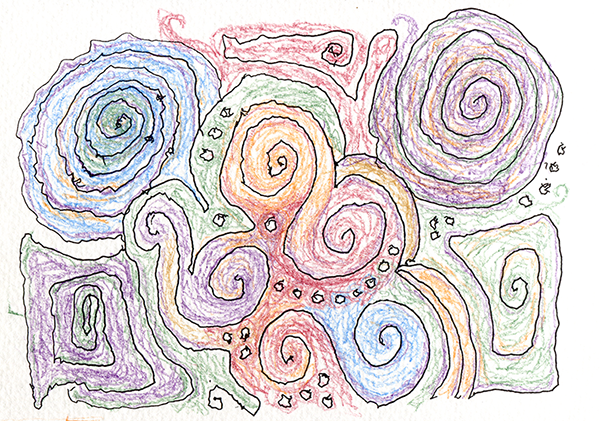We like to think that love comes without limits. Yet I find myself wanting to write about boundaries as I think about love this month. Love comes with a strong sense of attachment and, humans that we are, attachment can lead over into one party wanting to control the other or at least wanting things to go their way. I think I’m right, so why not insist that we do what I want to do? I want the best for you, and I know what best is. Naturally, you may not agree. You may want to set limits on how much I can decide for us. This is where boundaries are useful.
Boundaries and clarity and build trust. “Clear is kind,” declares researcher and storyteller Brené Brown. I find her discussion of boundaries helpful.
“Setting boundaries,” she writes, “is making clear what’s okay and not okay, and why. Setting boundaries is vulnerable and brave.”
Her research shows that we are afraid to set boundaries with each other because we don’t want to seem mean. I fear that if I say something is not okay, you will stop liking me. The consequences of not setting boundaries, the research suggests, are resentment, anger, and frustration.
Another reason we don’t set boundaries is because we don’t know how. Brown advises that we be clear, respectful, and open for questions. She suggests that, while we are pondering a request or situation, we silently repeat to ourselves “choose discomfort over resentment.” We can rehearse setting boundaries by saying, to no one in particular, “I can’t take that on right now…” And “my plate is full…” “It’s okay with me if you… What’s not okay is…”
If you regularly write how you are feeling in your journal, you might see patterns of resentment in your relationships. Feeling resentful is a sign that your (often unspoken) boundaries may have been breached. You can revisit the situation and decide and declare some limits.
Psychologist Nicole LaPera advises that the first step of setting boundaries is to consider the reason behind them. For example, you might decide, “I need boundaries in this relationship because I need to establish my independence.” The next step is to state the boundary clearly both to yourself and the other. Example: “I want to stay connected to you and I love your phone calls. Please know, though, that I won’t answer the phone after 8 PM.” I’ve clearly said what’s okay and what’s not okay. LaPera warns us to be prepared for some pushback. Setting a new boundary means that we are changing the dynamic of the relationship. This may be met with acceptance or resistance. Remember that you are not responsible for the emotional reaction of the other person; their emotions are their responsibility. Finally, you need to maintain your boundaries, following through on whatever limits you set. Be prepared to weather the storm of discomfort as the relationship adjusts to its new shape. LaPera distills the boundary setting process to three words: create. State. Maintain.
Setting boundaries is not about limiting love. Boundaries enable us to love and respect ourselves and the others involved. They are not easy, but they are a vital part of healthy, happy relationships. “Boundaries are the key to self-love,” says Brené Brown, “and the key to treating others with loving kindness.”

